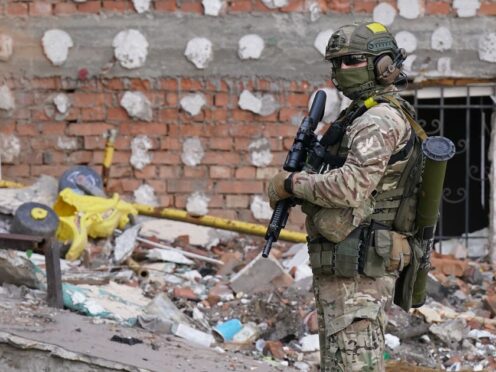Academics are asking Ukrainian citizens to post photos and videos of how the war has affected their everyday lives.
The initiative is a project that aims to record conflict heritage and testimonies of people impacted by the conflict.
The researchers, based in both Scotland and Ukraine, are due to launch the crowdsourcing project, around two years since Russia’s full-scale invasion of Ukraine began.
The photos and videos uploaded by Ukrainians will be gathered through monitoring social media platforms, such as X/Twitter, Facebook and Instagram.
The ongoing war is estimated to have affected millions of Ukrainian people.
The new project, titled The War Spoke To Us Noisily With Explosions And Quietly With Things. is a partnership between the Archaeology Department, National University of Kyiv-Mohyla Academy (NaUKMA) and The Scottish Centre for War Studies and Conflict Archaeology, University of Glasgow.

The project calls upon Ukrainian citizens to help crowdsource images of the effects of war to give a better understanding of how the population is responding to the conflict in real time.
It follows a pilot study where students and researchers in NaUKMA gathered pictures and video of how the war impacted ordinary people.
The pilot study showed examples such as memorial gardens, and another of a woman dumping rubbish into the open hull of a burnt out Russian armoured vehicle – a makeshift skip.
Local artists also created artworks from shell casings and jewellery from melting down spent bullets.
Dr Oleh Bilynskyi, associate professor, head of archaeological department at NaUKMA, who is co-lead of the project in Ukraine said that in war, the “concept of identity presents itself to us from a new, previously unknown side”.
He said: “All of this is reflected, including in things and spaces that surround people. They change their functions and integrate from one sphere of life to another.
“Shells from artillery projectiles become ashtrays, flower beds cover trenches, satellite internet terminals become elements of military vehicles, and explosives are attached to wedding drones.
“Archaeology has developed a rich toolkit for researching things and spaces where people live, and in such a situation, the use of its methods allows us to complement our understanding of how humanity experiences war.
“This shows the specific aspects of Ukrainian identity, how our society copes with such challenges.
“Recording these features allows us not only to study but also to preserve Ukrainian identity and culture.”
Diana Nahirna, a psychologist working with people affected by the war, who is co-lead of the project in Ukraine, said: “Recording the material culture of an ongoing war and seeking to uncover the human experience behind it is a great challenge in terms of methodology, security, and interpretation.
“It can also have an emotional toll, since we are working with struggle, loss, trauma, dangers, and uncertainties.
“My role is to support the participants, academics and students who are processing the often painful stories behind those objects of war, fostering resilience and helping make sense of the new reality.
“Growing beyond adversity starts with telling your story. Our hope is to understand and amplify their voices, to preserve the memory of the war, to help find meaning and heal.”

Tony Pollard, a professor of conflict history and archaeology, who is co-lead on the project in Glasgow, said: “It is hoped that this sort of information will help us to understand the impact of war on a population, and once the war is over even playing a part in the recovery and repair of both people and things.
“I have just returned from Vietnam where I have been looking at how that previously war-torn country has used the legacies of war in these processes.
“My only regret in relation to the project, beyond the suffering and upheaval caused by the war in the first place, is that we cannot be in Ukraine offering direct support and assisting with the data collection, but this is their project and we are here to help in any way we can.”
